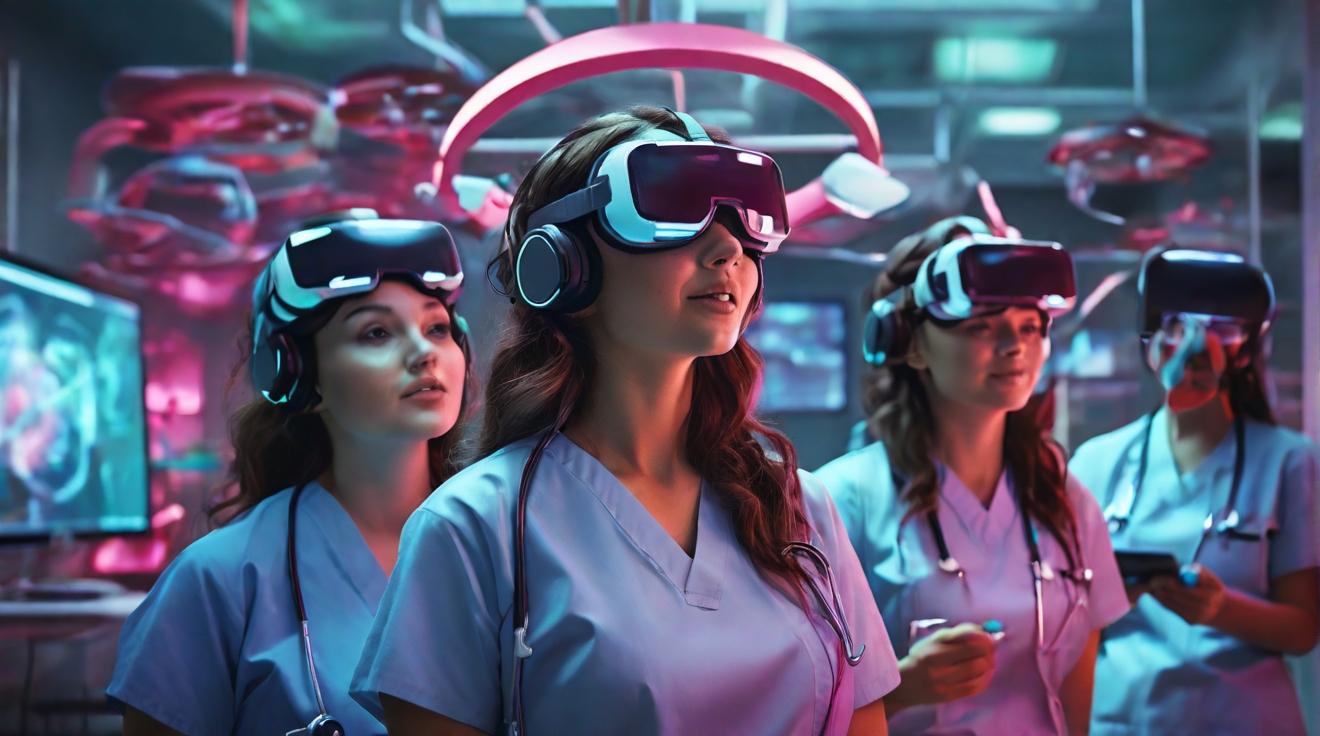How the Nursing Educator Shortage Has Created a Tipping Point for Virtual Reality Simulations
Realistic simulations in nursing education are becoming crucial as the industry faces a shortage of qualified nurse educators. Virtual reality (VR) simulations are being utilized to address the educator shortage, provide standardized clinical experiences, and enhance learner engagement and confidence.
In an effort to effectively achieve learning objectives, nurse training programs are turning to immersive VR simulations. According to a recent survey, disengaged learners and shorter attention spans are posing a significant challenge. Additionally, the American Association of Colleges of Nursing reports that nursing schools are struggling with limited capacity due to a lack of qualified educators and training resources.
Realistic simulations in nursing education range from “low fidelity” methods like tabletop exercises and role-playing, to more advanced “high fidelity” simulations using standardized patient actors and tech-enabled manikins. However, VR scenarios are emerging as powerful tools to bridge the gap. A critical survey found that 84% of nursing instructors cited a lack of simulation facilities as a reason for denying acceptance to qualified applicants. Consequently, institutions are now integrating VR into their curriculums to provide scalable simulation options that mimic the unpredictable nature of nursing, all while prioritizing patient safety.
Virtual reality, initially popularized in gaming, is proving to be invaluable in various industries, including education and healthcare. A study conducted by PwC revealed that immersive VR significantly increased learner engagement and emotional connection with the training content compared to traditional methods. With the ability to design virtually any scenario in VR, instructors can streamline the training process without the logistical challenges often associated with manikin-based simulations. Surveys have also shown a preference for VR-based nursing simulations, striking a balance between immersive VR experiences and computer screen-based training, with live role-play and manikins also being favored for different reasons.
Combining VR and manikin simulations can be particularly effective. VR enhances soft skills like empathy and clinical judgment, while manikins prove valuable for practicing psychomotor skills. However, the adoption of VR and other technological tools in nursing education still faces hesitancy from some instructors who are concerned about the learning curve and potential technological failures.
The evolution of educational technologies, from simple PowerPoint presentations to the potential widespread use of VR in the next decade, demonstrates a natural progression and increasing ease of use over time. As technology vendors continue to improve user-friendliness, instructors require time to adjust to new training modalities. VR is poised to play a pivotal role in nursing education, enhancing critical skills necessary for delivering quality patient care and improving nursing licensing examination scores.
Analyst comment
Positive news. The market for virtual reality simulations in nursing education is expected to grow as the industry faces a shortage of qualified nurse educators. VR simulations can address this shortage, provide standardized clinical experiences, and enhance learner engagement and confidence. By integrating VR into curriculums, institutions can provide scalable simulation options that prioritize patient safety and mimic the unpredictable nature of nursing. The adoption of VR in nursing education is expected to increase as technology vendors improve user-friendliness and instructors adjust to new training modalities. This will enhance critical skills necessary for delivering quality patient care and improve nursing licensing examination scores.













